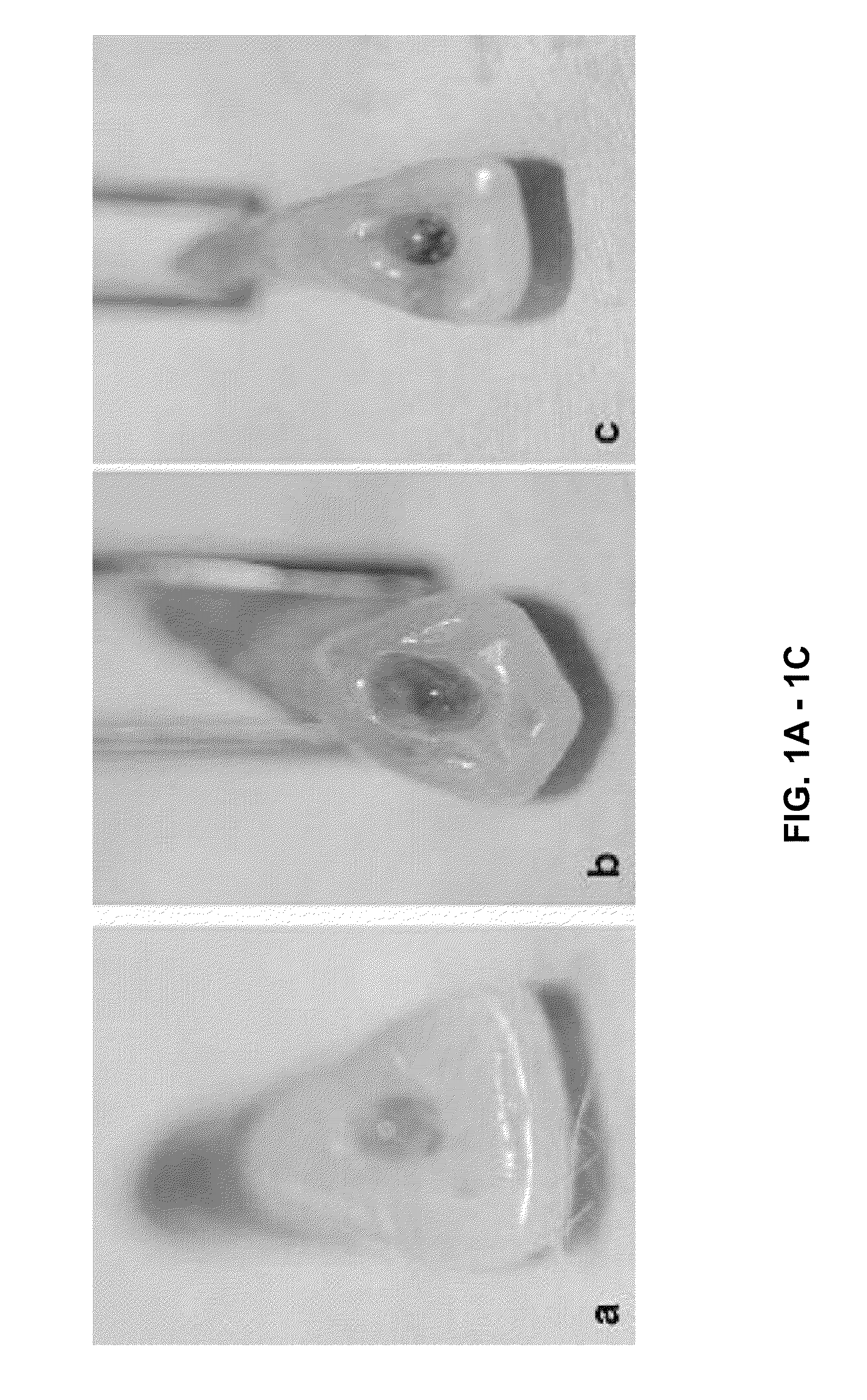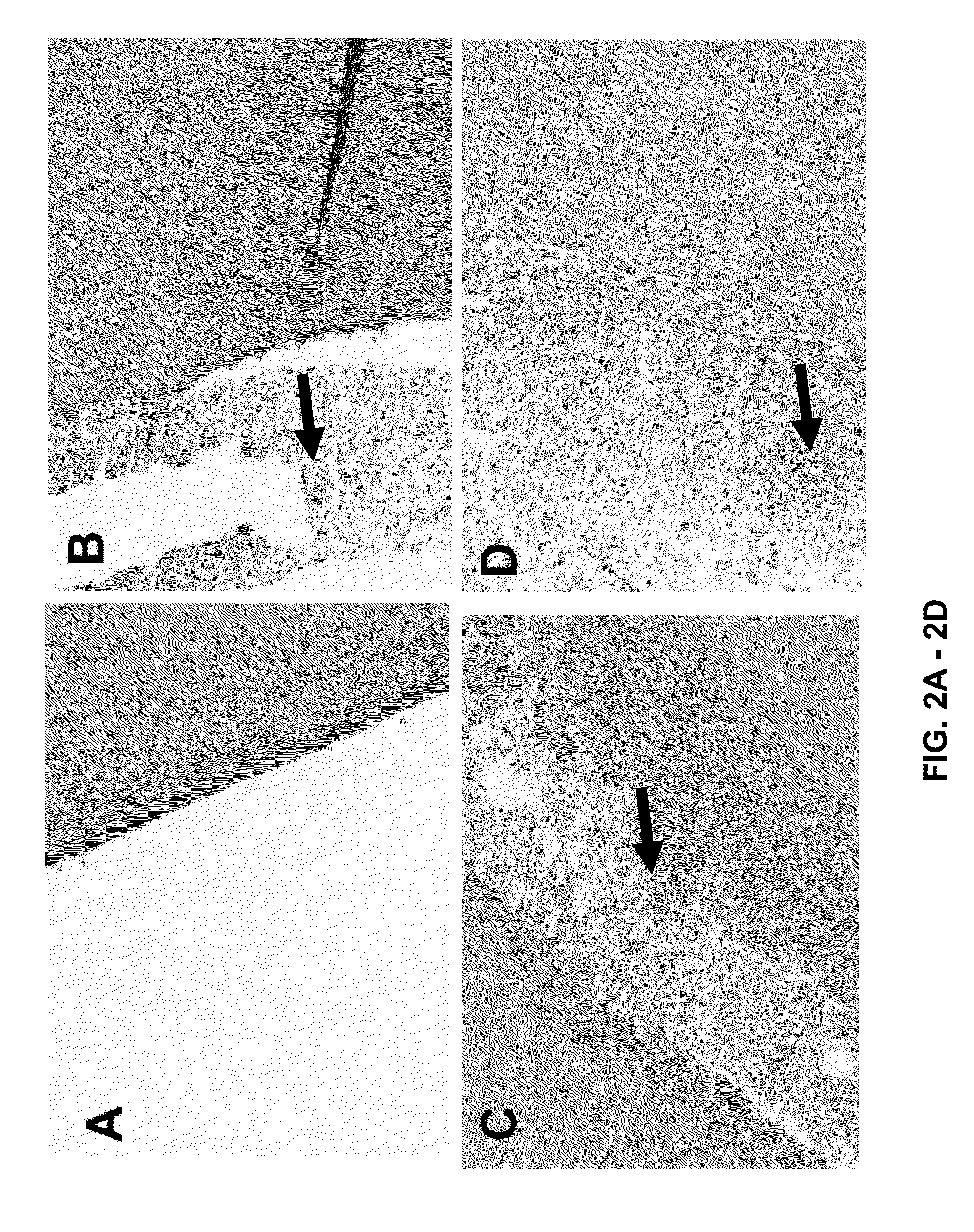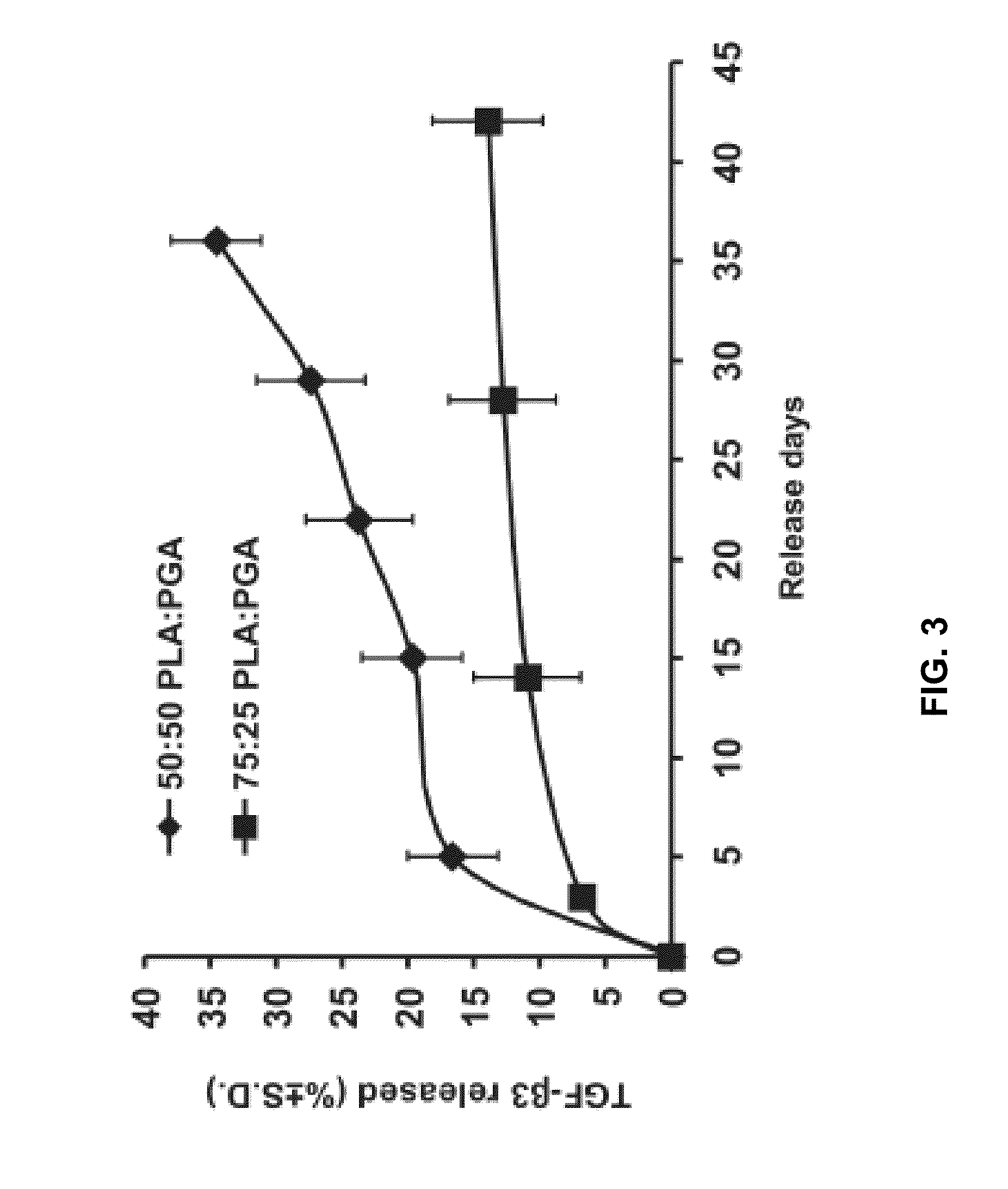Compositions and methods for dental tissue regeneration
a dental tissue and composition technology, applied in the field of dental tissue regeneration, can solve the problems of affecting the quality of life of patients, prone to fracture, brittle root canal-treated teeth, etc., and achieve the effect of high speed
- Summary
- Abstract
- Description
- Claims
- Application Information
AI Technical Summary
Benefits of technology
Problems solved by technology
Method used
Image
Examples
example 1
[0257]Extracted human incisors were subjected to a root canal treatment. A collagen sponge, with or without bFGF and / or VEGF, was then implanted into the root canal. The incisors were then implanted subcutaneously in immunodeficient mice. The teeth were removed after two weeks and assessed for vascularization in the pulp chamber and root canal.
[0258]On visual inspection, the teeth treated with a collagen sponge without any bioactive ingredient had no apparent vascular development (FIG. 1a). However, teeth treated with a collagen sponge having bFGF or the combination of bFGF and VEGF showed vascularization in the collagen sponge inserted into the root canal (FIGS. 1b and 1c).
[0259]The root canal of the above-treated teeth were further evaluated microscopically. Teeth treated with a collagen sponge without any bioactive ingredient showed no tissue growth in the root canal (FIG. 2A) whereas teeth treated with a collagen sponge with either bFGF or VEGF or the combination of bFGF+VEGF sh...
example 2
[0260]To following example demonstrates encapsulation and controlled release of an odontogenic bioactive ingredient, bone morphogenic protein-7 (BMP-7), and a neurogenic bioactive ingredient, nerve bioactive ingredient (NGF), in a biocompatible microsphere, poly-d-l-lactic-co-glycolic acid (PLGA). PLGA was fabricated from 50:50 (PLA:PGA), and degraded slowly. BMP-7 and NGF were released gradually upon the degradation of PLGA microspheres over time. After four to six weeks, the release profiles of BMP-7 and NGF were determined by ELISA, and confirmed cumulative release concentration curves. These findings provide the proof of concept for applying BMP-7 and NGF in biocompatible microspheres for the regeneration of dental pulp in vivo.
[0261]Microspheres of poly-d-l-lactic-co-glycolic acid (PLGA, Sigma, St. Louis, Mo.) of 50:50 PLA / PGA ratio were chosen due to published findings on the cumulative release profile (Moioli et al., 2006; 2007a,b; Clark et al., 2007) (FIG. 3).
[0262]One hundr...
example 3
[0265]Primary odontoblasts (Od) were isolated from dental pulp of postnatal day 14 Col1a1(2.3 kb)-GFP mouse incisors and separated from non-odontoblast cells by GFP sorting. Primary osteoblasts (Ob) were isolated from calvaria in the same mice. Global gene expression profiles were analyzed by Alilgent-mouse-genome-oligo microarray. Target genes that may distinguish between odontoblasts (Od) and osteoblasts (Ob) were selected using >5 folds and p<0.01 (adjusted), and confirmed by qRT-PCR, immunohistochemistry and in-situ hybridization. Wnt3a and BMP7, which were encoded by corresponding genes from microarray data, were encapsulated in collagen gel and delivered into endodontically treated root canals of minipig lower incisors in vivo (N=8). Dental pulp regeneration was evaluated 3 months later.
TABLE 3Selected genes that are differentially expressed.Bold: highly expressed genes in odontoblasts. Non-bold: highly expressed genes in osteoblasts.Description andGenesAccess #Foldsputative f...
PUM
| Property | Measurement | Unit |
|---|---|---|
| diameter | aaaaa | aaaaa |
| diameter | aaaaa | aaaaa |
| concentration | aaaaa | aaaaa |
Abstract
Description
Claims
Application Information
 Login to View More
Login to View More - R&D
- Intellectual Property
- Life Sciences
- Materials
- Tech Scout
- Unparalleled Data Quality
- Higher Quality Content
- 60% Fewer Hallucinations
Browse by: Latest US Patents, China's latest patents, Technical Efficacy Thesaurus, Application Domain, Technology Topic, Popular Technical Reports.
© 2025 PatSnap. All rights reserved.Legal|Privacy policy|Modern Slavery Act Transparency Statement|Sitemap|About US| Contact US: help@patsnap.com



